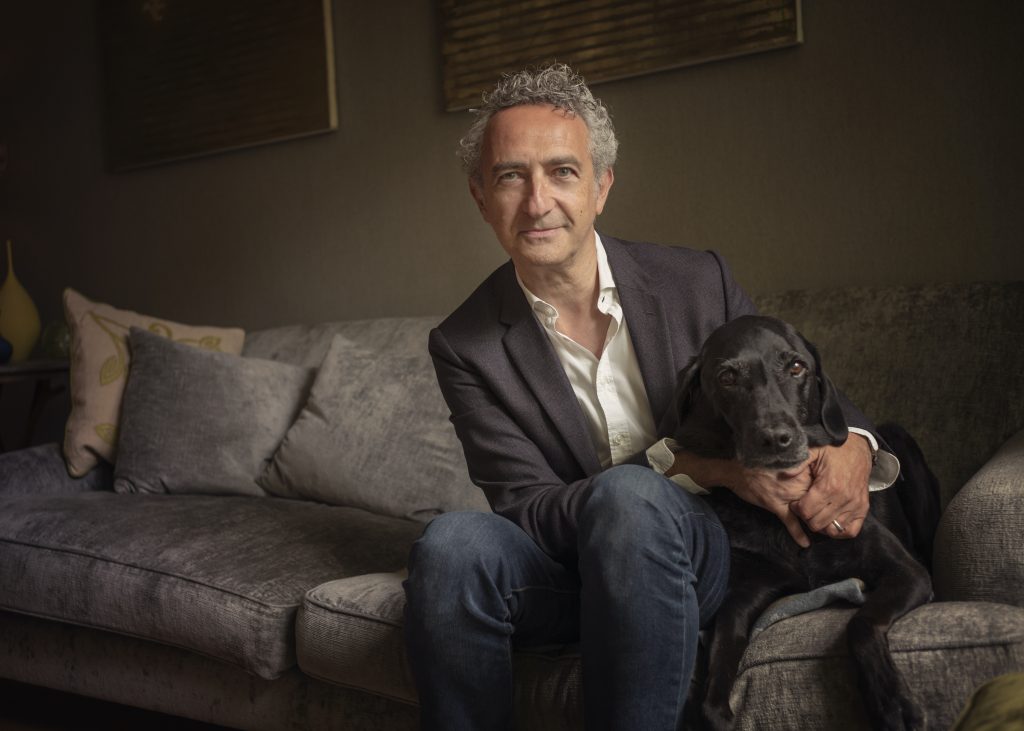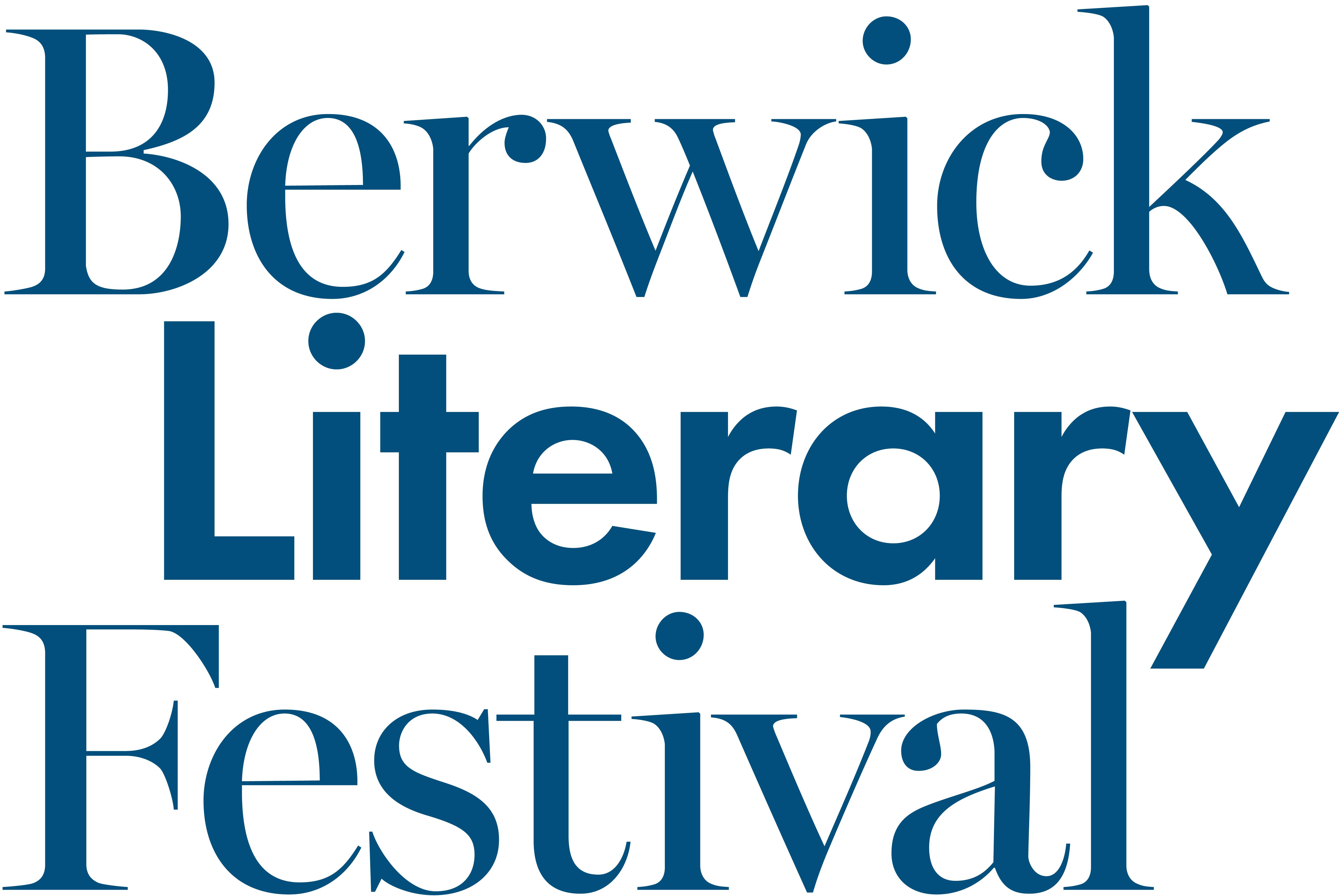Simon Garfield author of Dog’s Best Friend: A Brief History of an Unbreakable Bond gives an exclusive interview to 2021 Berwick Literary Festival blogger George Cochrane. Simon will be speaking online and free at our Northumberland book festival this October.
British wrestling, typefaces, stamps, the colour mauve: what links them? Answer: Simon Garfield who, for 35 years now, has been writing books that make the mundane interesting and the niche current.
So the subject of his latest book, Dog’s Best Friend: A Brief History of an Unbreakable Bond, may come as something of a surprise. You can’t get more mainstream than dogs. Yet if there is one thing I gleaned from my recent conservation with Garfield, it is that he doesn’t have much choice in what he writes about: “The more you look for a subject, the less effective it’ll be. The best ideas always come from left field.”

In the case of Dog’s Best Friend, the left field was his editor, Jenny Lord, who “knew of my lifelong love of dogs and thought it was about time I wrote about them”. The result is as much a personal history of dogs as a general one, with Garfield’s 14-year-old black Labrador, Ludo, receiving a number of memorable cameos. It really is a charming read and we look forward to hearing more about it when Garfield joins us at the Berwick Literary Festival on 15 October.
For now, though, I want to focus a little on Garfield’s process. What impressed me about Dog’s Best Friend was how lightly it wears its learning; how its chapters on canine genetics, for instance, communicate complex science so clearly. Voice, it seems, is the answer.
Garfield takes great pains finding a book’s voice, often writing a placeholder introduction just “to get the tone right” before he gets too deep in his research. Choice and arrangement of topics are also important at this stage. Garfield spends a long time on structure, alternating denser chapters with lighter ones so that the reader “never has the option of being bored” or turning away. An early plan of Dog’s Best Friend, he tells me, included a chapter on dog cruelty. He even went on a hunt to research the issue. Yet when it came to it, the chapter ultimately didn’t fit the book’s positive tone and Garfield took it out: “This book is primarily a celebration of dogs. Never lose the reader”.

It helps, he says, that he does not feel any pressure to have the final word on a subject or to write the “definitive biography”. His project is to present “the most interesting and entertaining things that will make you think about the subject in a new way”. An approach he describes as a “mixture of journalism and fairly easy-going academia”. “Fun” is a word that keeps coming up in our conversation. A book must be “fun” – for both reader and writer – and Garfield describes the process of winnowing his research down to the key facts as a “joy and liberation”. You don’t want every “scrap of detail” in there.
I ask him how long the enjoyment lasts: does he maintain an interest in a subject after he has finished a book? Yes. He is just as interested in typefaces now as he was when he wrote his bestselling book on them, Just My Type: A Book About Fonts (2010). Just don’t ask him about them! It’s why he came off Twitter: people kept enquiring about things he had written about years previously – expecting him to identify, for example, a very specific font – and Garfield spent hours a day responding when he’d rather be writing.
That said, Garfield loves taking his books on the road and “can’t wait for book festivals to be live again”. Public speaking is one of the things he has missed most over lockdown. It’s something he is very good at (his lectures on “Love Letters” and “Design in Miniature” are freely available on YouTube and well worth watching). He also speaks excitedly of the reissue of his book on the AIDS epidemic (The End of Innocence: Britain in the Time of AIDS, 1994). It’s a work that has gained new relevance thanks to the current health crisis and the successful Channel 4 series It’s a Sin. Indeed, It’s a Sin creator Russell T Davies is to write a foreword for the new edition of Garfield’s book.

I wonder if durability is why Garfield made the move from journalism to books in the first place. He talks fondly of his student days at LSE working on the university paper. How he became its co-editor within about nine months “because no one else wanted to do it”; how he had to take the night train to Derby every week to get it printed; how he would “never have as much journalistic freedom again”. But he was always frustrated, he says – even later when he was working for The Guardian – at how little time he had to write and research his articles. He felt as if he were only ever “scraping the surface” as a journalist. Books, then, were always on his agenda.
On which note, I ask Garfield the question writers hate to be asked: what’s on his agenda now? I am taken aback by the answer: after 20 books, Simon Garfield is writing his first novel. He seems as surprised about this as I am. The novel began as an idea for a work of non-fiction. He expresses his own uncertainty about the project, calling it a “bizarre enterprise.”
Yet surprise and uncertainty, it occurs to me, have always informed Garfield’s practice: the surprise of a new subject presenting itself; the uncertainty that makes him want to research it. I would be worried if he wasn’t worried about this novel.
Dog’s Best Friend: A Brief History of an Unbreakable Bond is published by Weidenfeld & Nicolson and is available in all good bookshops.
George Cochrane is a writer and blogger. You can read his work at www.bookstalling.com.
For the full Literary Festival programme and information on registration and booking for Festival Events click here
